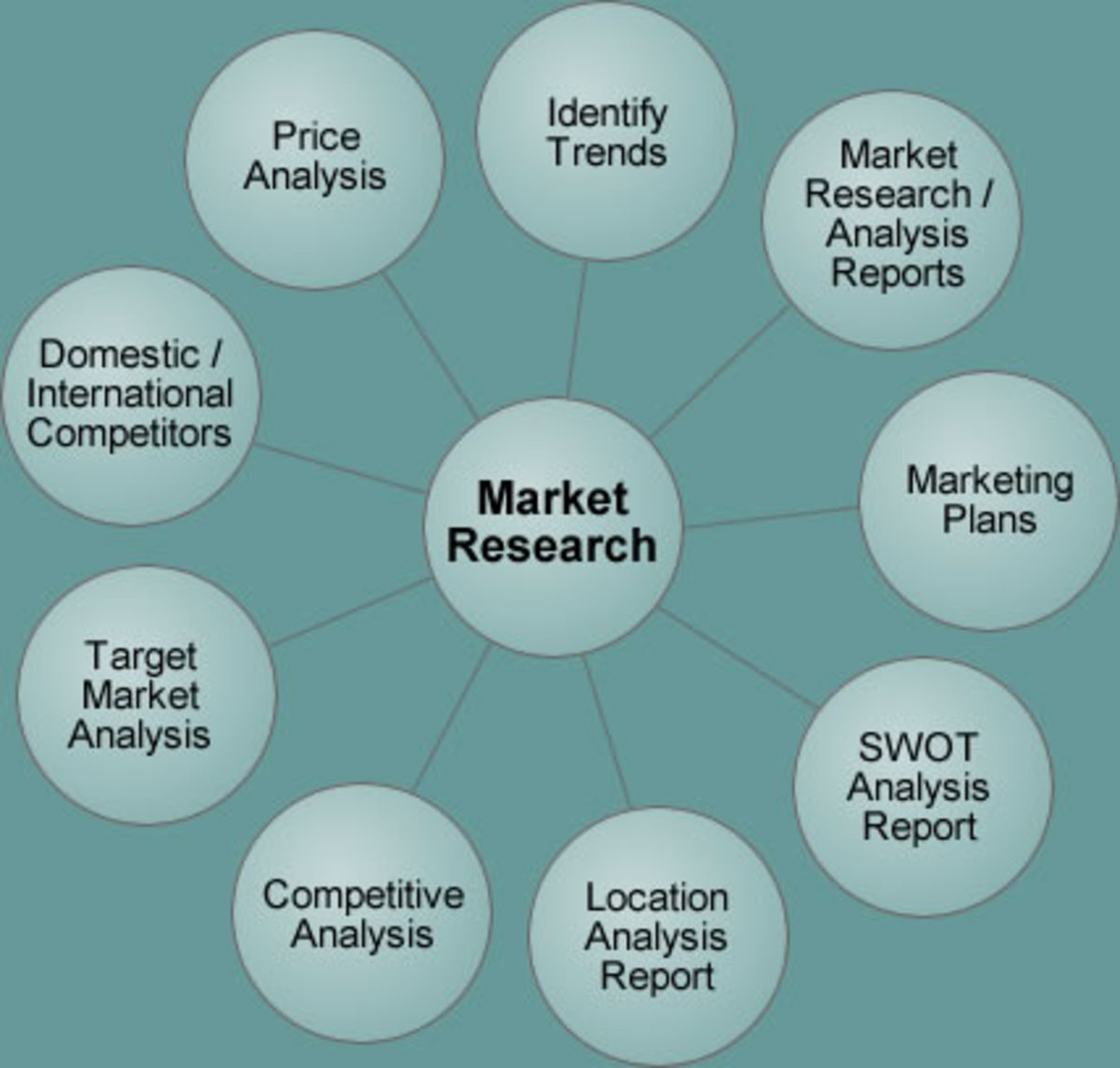The product life cycle describes
the stages a product goes through from when it was first thought of until it
finally is removed from the market. Not all products reach this final stage.
Some continue to grow and others rise and fall. PLC is associated with the
changes in the marketing situation, thus impacting the marketing strategy and
the marketing mix.
If
you are considering entering an industry and making a product, knowing where
the product is in its life cycle can provide valuable information of how to
position your product in the market in terms of price, promotion and
distribution.Each product may have a
different life cycle.The product’s life cycle - period usually consists of five
major steps or phases: Product development, Product introduction, Product
growth, Product maturity and finally Product decline.
1. PRODUCT DEVELOPMENT
PHASE:
Product development
phase begins when a company finds and develops a new product idea. This
involves translating various pieces of information and incorporating them into
a new product. A product is usually undergoing several changes involving a lot
of money and time during development, before it is exposed to target customers
via test markets. Those products that survive the test market are then
introduced into a real marketplace.During the development phase, sales are zero
and revenues are negative. It is the time of spending with absolute no return.
2. INTRODUCTION PHASE:
The introduction phase
of a product includes the product launch with its requirements to getting it
launch in such a way so that it will have maximum impact at the moment of sale.Large
expenditure on promotion and advertising is common. A company must be prepared
to spent a lot of money and get only a small proportion of that back.
Having the product in every counter is very important and is regarded as
an impossible challenge. Some companies avoid this stress by hiring external
contractors or outsourcing the entire distribution arrangement. This has the
benefit of testing an important marketing tool such as outsourcing.
3. GROWTH PHASE
The growth phase offers
the satisfaction of seeing the product take-off in the marketplace. This is the
appropriate timing to focus on increasing the market share. If the product has
been introduced first into the market then it is in a position to gain market
share relatively easily. A new growing market alerts the competition’s
attention. The company must show all the products offerings and try to
differentiate them from the competitor’s ones. A frequent modification process
of the product is an effective policy to discourage competitors from gaining
market share by copying or offering similar products. Other barriers are
licenses and copyrights, product complexity and low availability of product
components.
4. MATURITY PHASE
When the market becomes
saturated with variations of the basic product, and all competitors are
represented in terms of an alternative product, the maturity phase arrives. In
this phase market share growth is at the expense of someone else’s business,
rather than the growth of the market itself. This period is the period of the
highest returns from the product. A company that has achieved its market share
goal enjoys the most profitable period. During this period, new brands are
introduced even when they compete with the company’s existing product and model
changes are more frequent. Pricing and discount policies are often changed in
relation to the competition policies i.e. pricing moves up and down accordingly
with the competitors one and sales and coupons are introduced in the case of
consumer products. Promotion and advertising relocates from the scope of
getting new customers, to the scope of product differentiation in terms of
quality and reliability.
5. DECLINE STAGE:
The decision for
withdrawing a product seems to be a complex task and there a lot of issues to
be resolved before with decide to move it out of the market. Dilemmas such as
maintenance, spare part availability, service competitions reaction in filling
the market gap are some issues that increase the complexity of the decision
process to withdraw a product from the market.Sometimes it is difficult for a
company to conceptualize the decline signals of a product. Usually a product
decline is accompanied with a decline of market sales.This is the time to start
withdrawing variations of the product from the market that are weak in their
market position. This must be done carefully since it is not often apparent
which product variation brings in the revenues.
Extending the Product
Life Cycle:
What can businesses do
to extend the product life cycle?
Extension strategies
extend the life of the product before it goes into decline. Again, businesses
use marketing techniques to improve sales. Examples of the techniques are:
a) Advertising – try to gain a new audience or remind the
current audience.
b) Price reduction – more attractive to customers.
c) Adding value – add new features to the current product, e.g. improving the
specifications on a smartphone.
d) Explore new markets – selling the product
into new geographical areas or creating a version targeted at different
segments.
e) New packaging – brightening up old packaging or subtle changes.

